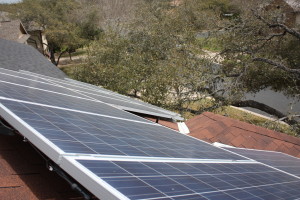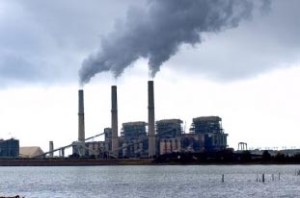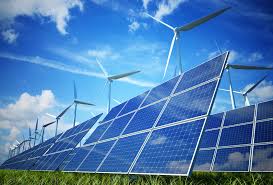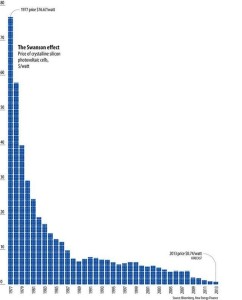Public Citizen’s Texas office had the fortune to office in this building for the past six years.
Until it was demolished last week to make way for an 8 story office building.
Public Citizen’s Texas office had the fortune to office in this building for the past six years.
Until it was demolished last week to make way for an 8 story office building.
Posted in Global Warming | Tagged Texas |
 Although we buy cleaning products thinking they will protect us and kill all the nasty germs that lurk in our kitchen sinks and toilets, many of these home cleaning products are packing in a bigger punch that can have serious effects on our health and environment.
Although we buy cleaning products thinking they will protect us and kill all the nasty germs that lurk in our kitchen sinks and toilets, many of these home cleaning products are packing in a bigger punch that can have serious effects on our health and environment.
Take for example antibacterial hand soap that became so widespread after the H1N1 virus scare. Antibacterial hand soap was in every restaurant, school, and office space, ever since and became a normal commodity in American lives. Now the chemical found in antibacterial soaps called triclosan, has been banned in Minnesota for potentially promoting triclosan-adapted super bugs along with being no more effective, but more expensive than normal hand soap according to a study posted on the Oxford Journal.
Air fresheners use about 18.4 kWh of electricity and about half a gallon of oil every year while also containing higher levels of phthalates in some major air freshener brands that can cause birth defects. Many of these chemical ingredients are not listed on the label because they don’t have to be. Febreze alone has 87 chemicals, including BHT, which is a known neurotoxin, and acetaldehyde and propylene glycol, which are both carcinogens. Cleaning products aren’t required to include their ingredients on their label, which can be potentially dangerous when dealing with chemicals designed to kill bacteria, viruses and mold.
Bathroom and home cleaners are the worst as far as environmental and health risks. Brands as “family friendly” as Scrubbing Bubbles and Lysol have chemicals banned in the EU and statements on their label that say “harmful or fatal if swallowed” and can cause “irreversible damage to the eyes”. Environmental Working Group has a list of the top 10 worst bathroom and household cleaners to stay away from.
Having so many toxic cleaning products around the house is not worth it especially with animals or children exploring wherever they can fit their paws and fingers. There are alternative ways and products that can not only create a safer environment but also save you money like using the old fashioned white vinegar and water or various plants that have the power to remove 90% of chemicals in a room in under 24hrs. If you want something stronger there are plenty of organic, non-toxic cleaning chemicals that can make good replacements that can be found at ewg.org.
Posted in Health, Toxics | Tagged Texas, toxic chemicals, toxic cleaning |
 Even the best policies are rarely perfect from the onset. Sometimes circumstances change and sometimes certain outcomes simply weren’t considered. Either reality can result in a potentially great policy being only mediocre, or even bad. Part of what makes a great policy, is a willingness to make corrections as needed.
Even the best policies are rarely perfect from the onset. Sometimes circumstances change and sometimes certain outcomes simply weren’t considered. Either reality can result in a potentially great policy being only mediocre, or even bad. Part of what makes a great policy, is a willingness to make corrections as needed.
Austin Energy’s value of solar tariff (VoS) was the first effort of it’s kind. Across most of the country, solar customers are billed for energy used, minus energy produced – a policy called net metering. Instead, Austin Energy’s VoS establishes a monetary value for the energy produced from local solar installations. Customers are billed for all of the energy they use at their regular tiered rates and are then credited for all the energy they produce at the VoS rate.

Austin Energy solar customer have 2 meters, one to measure energy consumption and one to measure energy production.
The VOS was intended to ensure that both the solar customers and the utility were getting fair and accurate value for the energy that each was providing. And, the incentive to reduce electric consumption that is provided by the tiered rates is maintained. That’s because even if an energy hog offsets some of his use with solar, he will still be charged a higher rate for that consumption. Solar is great, but using less energy is even better. The VoS was a lofty new idea, adopted by a utility known for it’s renewable energy innovation.
A couple years into using the VoS, it is working, but needs a bit of perfecting. On Monday evening, the Austin Electric Utility Commission (EUC) voted to support a few key changes, as proposed by Commissioner Clay Butler.
Austin Energy has already endorsed several these recommendations (#’s 1, 2, 4, and 5). The next step will be for the Austin City Council to act on these recommendations. There will be opportunities for the public weigh in on these issues before Council as part of the budget process in August.
Posted in Austin Energy, Energy, Renewables, solar | Tagged Texas, value of solar tariff, vos |
When you ask most people what they think of solar power, they image rooftops covered in panels, and talk of going green. However, if you ask a government or private scientist what they think of solar power, you might get a very different answer. Give these guys enough time and money, and they’ll come up with some pretty mind blowing applications for the modest solar cell. Solar PV technology isn’t just becoming for affordable for existing applications, it’s also being contemplated for a variety of new uses.
One of the most cutting edge ideas in the solar world is the concept of Space Based Solar Power (SBSP). The concept involves launching huge solar arrays into space, where the sun is always shining at 100% intensity. Most designs involve a set of mirrors that collect solar radiation, and then condense it on to a super efficient lower orbit solar PV array. Once the energy is collected, its beamed down to Earth in the form of microwaves. A massive rectenna on earth, about 10km in diameter, receives the energy and converts it back to electricity. This set-up could produce more than 1GW of power, or about as much as the average nuclear power plant. While the technology exists to make this a reality, its wildly expensive because of the high cost of launching anything into space.
Along the same line of thought is the creation of laser solar satellites. These little guys collect solar energy from PV cells, and then blast it back to Earth in the form of a high powered laser. Each device produces about 1 to 10MW, so it would take an army of them to power a good sized city. In fact, the military has been quite interested in this technology for a long time. The idea of being able to instantly fry something from space has made people skeptical of developing this technology further.
A more peaceful, and ultimately more profitable idea, comes in the form of see-through solar power windows. A company called New Energy Technologies has created tiny, transparent, spray on solar cells that can be applied to windows. New Energy estimates that out fitting a building with electricity generating glass windows would only increase the cost of construction by about 10%. Developing a way to retrofit existing buildings with this product could usher in a new wave of the solar revolution. It could come sooner than people think too. There are a lot of companies and agencies all over the world working on this exact type of technology.
And of course there’s Solar Roadways, which you can read about in our previous post.
While all of these technologies are pretty futuristic, there is a true possibility of making them mainstream. With the right policies and funding, a world powered by extraterrestrial solar, sun fueled lasers, and self-generating buildings could be a reality.
Posted in Energy, Renewables, solar | Tagged laser solar satellites, SBSP, solar PV, solar roadways, solar windows, space based solar power, Texas |
Come out and support your favorite team! This week, the Circuit of The Americas is hosting American Solar Challenge and Formula Sun Gran Prix for solar cars.
The American Solar Challenge is an 8 day, 1700+ miles distance race from Austin TX to Minneapolis MN that tests how long each car can run under specific specs for the car. The Formula Sun race, hosted at the Formula One track in Austin, is a qualifying race with a focus on maneuvering around curves and corners while trying to complete the most laps.
 The Formula Sun race takes place July 17-19th with doors open from 8am-9pm. The first two days are dedicated to prequalifying rounds and the 19th is the actual race to determine who wins and also who qualifies for the American Solar Challenge.
The Formula Sun race takes place July 17-19th with doors open from 8am-9pm. The first two days are dedicated to prequalifying rounds and the 19th is the actual race to determine who wins and also who qualifies for the American Solar Challenge.
There will be 23 teams, including the University of Texas, who will race spaceship looking solar cars with a speed limit of 65mph. The event does not allow camping on the premises, but is free for the public to watch and root for their favorite team which is mostly colleges and universities from around the country.
There will be a children’s solar car workshop on the 19th about every hour during the day where they will be able to build and race small model solar cars.
If you and your family are interested in weird looking sustainable cars racing around the Circuit of The Americas then this event is one to mark on your calendar.
Posted in Energy, solar | Tagged american solar challenge, Formula Sun, solar cars, Texas |
Back in the 1990s, the EPA introduced rules to stop acid rain by cutting the emission of sulfur dioxide and nitrogen oxide. Critics thought it couldn’t be done, but inventive engineers came up with new and better ways to scrub the pollutants out of the smokestacks.
Now the same is believed for the newly proposed EPA regulations on carbon emissions, but there are many reasons to disagree with the skeptics. Many opposed are saying that the new regulations will bring elevated electricity bills and even plunge the nation into blackouts. But, in reality, emissions cuts have already been achieved in some states and those states are faring better economically than many other parts of the United States.
The new EPA carbon rules in a nutshell:
 By 2030 the EPA seeks to reduce America’s carbon dioxide emissions 30% from 2005 levels.
By 2030 the EPA seeks to reduce America’s carbon dioxide emissions 30% from 2005 levels.One way that some states have got a foot up on meeting the emissions standards is by joining the Northeastern cap-and-trade program known as the Regional Greenhouse Gas Initiative, which first put in a carbon cap in 2009. In the cap-and-trade system, the participating state governments placed an upper limit on total carbon emissions and issued permits for those emissions, which companies bought and sold from one another.
Nine northeastern states have already entered the program and have substantially reduced their carbon emissions in recent years. At the same time, those states have had stronger economic growth than the rest of the country.
Since 2009, the nine states have cut their emissions by 18 percent, while their economies grew by 9.2 percent. By comparison, emissions in the other 41 states fell by 4 percent, while their economies grew by 8.8 percent.
The states in the program reduced emissions faster and more efficiently than was previously assumed, and this gives a ray of hope to the rest of the United States. The sharp cut in emissions in the Northeast did not inhibit the economy there from doing just as well as elsewhere.
What’s the Problem, then?
 Some of the biggest opposition to the new regulations comes from heavily coal dependent states. However, many of them have been given more moderate goals to meet with the new regulations due to their reliance on coal and their limited renewable energy resources. But even in states that have made big cuts, the Obama plan is inciting some wariness with officials in those regions, who are pointing out that the plan would burden them with rigorous targets requiring them to go further in reducing emissions.
Some of the biggest opposition to the new regulations comes from heavily coal dependent states. However, many of them have been given more moderate goals to meet with the new regulations due to their reliance on coal and their limited renewable energy resources. But even in states that have made big cuts, the Obama plan is inciting some wariness with officials in those regions, who are pointing out that the plan would burden them with rigorous targets requiring them to go further in reducing emissions.
There are many different options that states can choose between when determining how to cut carbon emissions though. While cutting emissions in general is the goal, the ways of achieving those cuts can either push progress forward even more or just do what little needs to be done in order to meet the requirements. By choosing to rely on energy storage and renewable energy sources states will be able to not only cut emissions but help the world to move forward in a more sustainable way, with economic benefits for those states.
Why is Energy Storage a good option?
Energy storage has the potential to not only cut costs, but also allow us to keep energy in reserves for the future and times of emergency. Energy Storage systems are also fuel neutral, which means regardless of how the energy was generated the storage systems can save it.
Energy storage cuts costs primarily by lowering the overall cost of electricity. It also allows customers to avoid premium pricing when demand for electricity is highest. But most importantly, energy storage helps to reduce the amount of power outages and equipment failures that take place as well as limiting the amount of time the power is out. This not only helps to save time and money but it also can help to save lives.
Why are renewables a good option?
 Renewable resources are inexhaustible. They can be utilized without any fear of depletion. Unlike the burning of fossil fuels, which spew dangerous greenhouse gases that lead to global warming, wind and solar farms are emissions free. That is just one of the many reasons to convert to renewables. By switching there is also a great increase in job creation. In total there were 142,698 solar workers in the U.S. as of November 2013. This is a 20 percent increase over 2012 figures and ten times higher than the national average employment growth rate, which was 1.9 percent. Veterans also make up about 9 percent of the solar workforce compared with 7.5 percent of the national economy. These numbers are all very optimistic, but while the U.S. could see million of new jobs in renewable energy and energy efficiency, this will only happen with the necessary leadership, research, development, and public policy at the federal and state levels. The new EPA regulations took that first step.
Renewable resources are inexhaustible. They can be utilized without any fear of depletion. Unlike the burning of fossil fuels, which spew dangerous greenhouse gases that lead to global warming, wind and solar farms are emissions free. That is just one of the many reasons to convert to renewables. By switching there is also a great increase in job creation. In total there were 142,698 solar workers in the U.S. as of November 2013. This is a 20 percent increase over 2012 figures and ten times higher than the national average employment growth rate, which was 1.9 percent. Veterans also make up about 9 percent of the solar workforce compared with 7.5 percent of the national economy. These numbers are all very optimistic, but while the U.S. could see million of new jobs in renewable energy and energy efficiency, this will only happen with the necessary leadership, research, development, and public policy at the federal and state levels. The new EPA regulations took that first step.
The potential ways of meeting the new EPA emissions regulations are in abundance, but the only way we will start seeing change is if we begin to implement those solutions. By turning to renewable energy sources and supporting energy storage we can make sure that our country is not only able to meet the EPA regulations but goes above and beyond and to help clean up and protect our earth to make it safe for our children and their future. It is already evident that states can cut emissions and still see economic growth, so what are we waiting for?
Posted in Energy, Global Warming, green jobs, solar | Tagged Carbon Dioxide, co2, energy storage, epa climate rules, green jobs, Texas |
For the last 4 or 5 years, cheap solar panels flooding over from China have helped fuel a boom for U.S. solar installers. The nation installed a record shattering 4,750 MW’s of solar in 2013, a 41% increase over 2012. Utility scale, rooftop, and all other kinds of solar energy are benefiting from rock bottom Chinese module prices, which now stand as low as $0.50 per watt. However, there is a downside to these low prices. Domestic U.S solar manufacturers have been reeling from the intense competition. In an all too familiar story of domestic manufacturing being shipped off shores, observers have predicted that a sizable amount of the 75 U.S solar manufacturers may go out of business by 2015.
Fearing such a drastic shock to the industry, the U.S has recently imposed punitive tariffs on Chinese panels. Many U.S manufacturers claim that Chinese solar companies were able to sell panels below cost because of government subsidies that broke fair trade laws. The tariffs are stiff, ranging from 18 to 36%. Manufactures have cheered the ruling, but its hard to say how the tariffs might affect installation prices in the near term. However, it seems likely that they won’t do too much damage to the trend of falling prices.
Some U.S manufacturers already have plans to revolutionize the U.S solar industry now that they feel protected from aggressive Chinese economics. U.S based First Solar recently announced that they were able to produce modules at $0.59 per watt, which is only $0.09/W higher than the Chinese record. They project domestic prices to fall into the low $0.40’s/W in the near future. Another company named Solar City, which is run by Tesla CEO Elon Musk, has plans to open a solar manufacturing facility capable of being able to produce 1GW of panels per year. Solar City hopes to use economies of scale to produce very high efficient solar modules at the same price as cheap low efficiency Chinese panels.
Success in ventures like these could put U.S solar manufacturing back on the map, while at the same time support, or even accelerate the rapid demand for solar installations. Regardless of the short term volatility the industry may experience, solar energy is posed for great things.
Posted in Energy, green jobs, Renewables, solar | Tagged solar manufacturing, Texas |
 The FIFA 2014 World Cup in Brazil has so far been the biggest and most expensive tournament in soccer history. With ticket sales almost reaching full capacity and an estimate of over 500,000 visitors from around the world, the economic impact of this year’s World Cup has reached an all-time high. However, keeping this incredible event eco-friendly has been a daunting task with large amounts of pressure from environmental protection agencies around the world.
The FIFA 2014 World Cup in Brazil has so far been the biggest and most expensive tournament in soccer history. With ticket sales almost reaching full capacity and an estimate of over 500,000 visitors from around the world, the economic impact of this year’s World Cup has reached an all-time high. However, keeping this incredible event eco-friendly has been a daunting task with large amounts of pressure from environmental protection agencies around the world.
This year’s World Cup has exceeded CO2 emissions of the last World Cup in South Africa by over 1 million tons of CO2 with a total of 2.7 million tons. According to a study done by FIFA, and estimated 60% of the CO2 emissions are produced by transportation of personnel, equipment, teams, and fans coming from all over the world. Measures have been made to help prevent and offset the environmental impact such as building stadiums that run on solar power, rainwater collection facilities, and a large recycling program, but with any event on a scale and this grand is always a large environmental toll.
 UNEP and Brazil’s Ministries of Environment, Sports, Tourism, and Social Development have teamed up to create and promote Green Passport Tours which promotes sustainable tourism specifically for World Cup 2014. FIFA’s head of corporate social responsibility, Federico Addiechi, pledges to offset 100% of the 2.7 million tons of CO2 emissions starting next summer with programs in reforestation and investment in wind energy and hydroelectric power.
UNEP and Brazil’s Ministries of Environment, Sports, Tourism, and Social Development have teamed up to create and promote Green Passport Tours which promotes sustainable tourism specifically for World Cup 2014. FIFA’s head of corporate social responsibility, Federico Addiechi, pledges to offset 100% of the 2.7 million tons of CO2 emissions starting next summer with programs in reforestation and investment in wind energy and hydroelectric power.
Even with the changes that have been made to create a more sustainable World Cup, significant environmental improvements need to be made when hosting an event like the Olympics or World Cup; which emissions can equate to having 560,000 cars on the road for a year or the burning of 1.46 million tons of coal. Aside from emissions, the materials that were needed to improve Brazil’s infrastructure, build the stadiums and other buildings, power all telecommunications and TVs around the world, which has reached up to 3.2 billion viewers according to Bloomberg, also added to the degradation of the environment. With over $4 billion in untaxed revenue FIFA received for this World Cup alone, more time and money should be allocated towards the sustainability of our environment.
Environmental improvements for future World Cups have great potential if more leadership and requirements from FIFA were to be made. With hosting the World Cup being highly desirable for countries around the world, requiring more and stricter environmental standards for the host country would drastically improve environmental quality for these events. FIFA holds great power with its sponsors and host country and has the ability to use that leverage with changes such as requiring an amount of funding specifically for environmental health, eco architectural standards for all new stadiums, positioning all new stadiums to be near public transportation for less vehicle carbon emissions, or requiring an environmental advisor to assist the planning process for stadiums, hospitality and transportation.
All of these changes have the potential of making a large positive impact on the environment along with creating more awareness to the importance of sustainability. With great the support of FIFA, the World Cup could become an event not just for the love of soccer, but for new sustainable ideas that could be showcased to the world.
Posted in Air Quality, Climate Change, Efficiency, Energy, recycling, Renewables | Tagged carbon footprint, sustainable events, Texas, World Cup 2014, World Cup Brazil, World Cup sustainability |
Overturn the Citizens United ruling, urge your senator to support a constitutional amendment.
Read the following statement of Robert Weissman, President, Public Citizen to learn more about what the proposed constitutional amendment being put forward will and won’t do.
Note: The Constitution, Civil Rights and Human Rights Subcommittee of the U.S. Senate Judiciary Committee today approved an amended S.J. Res. 19, a constitutional amendment proposed by U.S. Sen. Tom Udall (D-N.M.) that aims to overturn Citizens United v. Federal Election Commission and other U.S. Supreme Court decisions relating to campaign finance.
Here’s how the world will be different after final ratification of the constitutional amendment today approved by the Constitution, Civil Rights and Human Rights Subcommittee of the U.S. Senate Judiciary Committee:
The 28th Amendment will give Congress and the states authority to regulate and limit the raising and spending of campaign funds, eliminating various barriers and obstacles imposed by the U.S. Supreme Court. It will overturn Buckley v. Valeo, Citizens United v. Federal Election Commission (FEC) and McCutcheon v. FEC, among other Supreme Court decisions that have facilitated the rise of a de facto oligarchy. Specifically, Congress and the states will be able to:
Following the public mobilization that will eventually obtain ratification of the 28th Amendment, we should expect Congress and the states to respond to that same public demand to restore our democracy – by enacting robust public financing systems, major curbs on outside spending and prohibitions on corporate spending in elections.
The amendment and subsequent legislation will not cure all of our nation’s ills, but it will help restore our democracy and remove key blocks to addressing the great problems facing the nation: putting people back to work, addressing deepening inequality, averting catastrophic climate change, fixing our schools, ensuring quality and affordable health care for all, and much more.
It shouldn’t need saying, but because of an intentional disinformation campaign by U.S. Sen. Ted Cruz (R-Texas) and other opponents of the amendment, it’s worth emphasizing what the amendment will not do: It will not “shred” or otherwise amend the First Amendment. It will not enable Congress and the states to adopt rules that discriminate on the basis of race, ethnicity or viewpoint. It will not permit Congress to adopt a law banning campaign expenditures by just the Sierra Club, or just the National Rifle Association.
What the amendment will do is strengthen and restore the First Amendment, which has been weakened and distorted by the Supreme Court. The 28th Amendment will amplify the voices of the People, and make their speech meaningful. As Supreme Court Justice Stephen Breyer noted in his McCutcheon dissent, “Speech does not exist in a vacuum. Rather, political communication seeks to secure government action.” And, he explained, “Where enough money calls the tune, the general public will not be heard.”
With the 28th Amendment, we put an end to the plutocrats paying the piper, and enable the people to again call the tune. Urge your senator to support a constitutional amendment.
Posted in Campaign Finance | Tagged citizens united, Constitutional amendment, Corporate campaign funds, Texas |
President Obama has made the promotion of renewable energy, particularly solar, one of the cornerstones of his energy policy. Just this April, the White House hosted a Solar Summit to announce new steps to expand the use of solar across US homes and businesses. The Department of Defense committed to installing 3 GW of renewables across its military bases, while the D.C area started engaging in the Capital Solar Challenge, which aims to facilitate adoption of solar on nearby federal buildings. Furthermore, the administration got over 300 private and public sector organizations to commit to installing solar.
These commitments totaled to over 800 MW.While the steps outlined in the Solar Summit are a step in the right direction, they are in reality fairly modest. The White House could be doing a lot more to promote solar with regards to direct deployment. In fact, the federal government manages more than 500,000 buildings. Each of these buildings adopting a 7 kW solar system would represent 35 GW of clean solar energy! An executive order mandating this type of solar deployment would cut countless tons of carbon emissions, provide an economic boost the industry, and send a very strong signal about the future of renewables. Send the White House a message and tell President Obama to #PutSolarOnIt!
Posted in green jobs, Jobs, Renewables, solar | Tagged obama, solar, Texas |
Solar energy has been used by humans for as long as there is recorded history. Check out some of these milestones in humanity’s use of Earth’s primary energy source.
Ancient Solar: The world’s first societies knew the importance of the sun. It provided them with food, warmth, as well as some more creative uses.
● Early societies bake adobe bricks with the sun – 5000 BC
● Greeks start fires with a magnifying glass – 450 BC
● The Lighthouse of Alexandria projects a beam of light 30 miles out to sea – 280 BC
● Romans design bathhouses to be passively heated by the sun – 100 AD
● Roman Emperor Justinian declares people have “sunrights”- 600 AD
Early Solar Tech: After a lapse of solar development in the Dark Ages (get it? No sun?), Enlightenment era inventors started to harness solar rays to do real work.
● World’s first solar cookers cook at 230 degrees Fahrenheit – 1750
● The photovoltaic effect is discovered by Edmond Becquerel – 1840
● Charles Fritts creates first solar cell at <1% efficiency – 1883
● First solar hot water heater sold commercially, is a huge hit in California – 1891
● Single crystal silicon, the main material in solar panels, is lab grown – 1918
Modern Solar Emerges: In an era of big oil and combustion, solar carves out a niche as a useful energy source for the space race, and remote applications.
● Energy shortage from WWII causes passive solar homes in the U.S to go mainstream – 1945
● The first modern silicon photovoltaic (PV) solar cell is created in Bell Labs – 1954
● The Vanguard I space satellite uses PV cells as its primary energy source – 1958
● World’s largest PV array, at 242 Watts, is installed on a Japanese lighthouse – 1963
● Solar PV drops from $100 to $20 per Watt, terrestrial use becomes common – 1970’s
● First solar powered car crosses Australia in 20 days – 1983
● Silicon solar cells break 20% efficiency – 1985
Present Day and Future: Rapidly declining costs create a boom in solar, as the world strives for a clean energy future.
 ● Solar PV drops to an average of $0.74 per Watt – 2013
● Solar PV drops to an average of $0.74 per Watt – 2013
● Total worldwide installed capacity reaches 100GW – 2013
● Top solar cell efficiency breaks 43%, eclipsing coal & nuclear – 2014
● Solar powered plane aims for non-stop trans global flight – 2015
● Solar PV expected to meet 17% of the world’s energy demand – 2030
Posted in Energy, Renewables, solar | Tagged Charles Fritts, energy source, Lighthouse of Alexandria, primary energy source, Roman Emperor Justinian, solar energy, Texas |
There is something lurking in households all over the US that is costing its residents an average of $220 or 5-10% of their annual electric bill. The culprit is called vampire power, or phantom load. It’s the power that electronic devices consume even while in standby mode. Kilowatt hours of electricity are being used just by being plugged into the wall.
Vampire power costs the US 100 billion kWh of electricity and over $10 billion in annual energy costs according to energystar.gov. That means, based off a 500 MW coal power plant which can produce up to 2.2 billion kWh of electricity per year, it would take 45.5 coal power plants to produce the amount of electricity vampire power consumes each year!
The top 5 vampire electronics per typical household are:
1. TVs- Rear projection and plasmas are the highest electricity consumers.
2. Video game consoles- Xbox and PS3 gaming consoles can cost around $25 per year.
3. Computers- Keeping your laptop plugged into the wall 24/7 can degrade the battery along with costing you money to keep it at a max charge.
4. Cable/satellite TV box- Along with a monthly payment, these services also come with a hidden fee in wasted electricity.
5. Phone chargers- Although they are small, if left in an outlet these vampire suckers just add to the lost power.
Things you could do to lessen vampire power and save money:
Lessening the impact of vampire power on your electricity bill doesn’t have to be unplugging every power hungry item every time you aren’t using it.There are many ways you can lessen the bill. Buying electronics that have the Energy Star emblem on the box guarantees that product lies within the EPA’s efficiency guidelines and consumes less energy while it’s in standby mode.
Saving energy and money can also be as simple as switching to power strips specifically designed to reduce vampire power. 3 different types of power strips- the timer, occupancy sensing, and current sensing strip- are designs that cater to different people and settings.
1. Timer strip allows user to set timers for when the current can flow within the strips. In an office setting this design could work best by turning power on and off in sync with hours of operation.
2. Occupancy sensing strip turns on power flow when it senses motion in the room, cater towards homes and home offices.
3. Current sensing strip detects the energy mode of an electronic, such as a computer monitor, which is plugged into the master outlet. If the monitor of a computer is in sleep mode, the current sensing strip will cut the electrical current to the rest of the electronic plugged in such as a printer, speakers, or other computer related device.
Small simple changes can be made to reduce the vampire power of each home or office, reducing not only the cost of your electric bill but also its environmental impact.
Posted in Efficiency, Energy | Tagged conserve energy, electricity consumption, phantom load, power strips, save money, Texas, Vampire Power |
Once again, Austin Energy has reduced solar incentives with less than 2 hours notice. This time, the changes will impact both residential and commercial customers.
As of 3pm today, the rebate for a residential solar installation is $1.10 per watt (down from $1.25) and the commercial performance based incentive (PBI) is $0.09 per kilowatt-hour (kWh) (down from $0.10).
You might well be asking why Austin Energy made these changes and why so suddenly.
The memo released by Austin Energy indicates that the decrease in the residential rebate was made because Austin Energy wanted to make sure that it didn’t exceed it’s budget for such rebates (the fiscal year ends in September). On the face, that sounds like a responsible move, but there was another option. Austin Energy could have reasonably anticipated this budget shortfall because the same thing happened last year. It could have requested a larger solar rebate budget instead of trying to cut that budget by about 42% (a proposal that was changed due to public outcry).
The reason stated for reducing the commercial PBI is that Austin Energy doesn’t want to make commitments now that would force it to exceed it’s planned FY2015 budget. PBI incentives are paid for each kWh for 10 years, so this kind of foresight is needed, but, again, another option would be to ask for a larger budget for commercial solar in FY2015.
Before you get to thinking that our answer to everything is just “spend more,” let’s clarify that spending more now could be offset with spending less later and we’d get more solar for every dollar spent.
Here’s why – Right now, and through the end of 2016, the federal government offers a 30% solar investment tax credit. So, for anyone or any business with tax liability, the federal government basically pays you back for 30% of the cost of your solar installation. In essence, Austin Energy is getting a match (about 82%, assuming installations are $3.40/watt, which is what Austin Energy has been reporting as average) for its rebate expenses. When the federal solar tax credit ends after 2016, Austin Energy may find that its solar rebate program isn’t quite as popular and it may need to spend more per watt to keep solar adoption growing, at least for a few years.
Spending more on solar rebates and the commercial PBI now could provide a buffer that will allow us to spend less in those post solar tax credit years.
Austin Energy says that it must make announcements about solar rebate and PBI levels without much notice because there would be a mad rush to get projects in under the higher incentive levels if solar contractors and customers knew ahead of time. There is some logic in that, but what has suffered is any opportunity for public input on changes being made. There is no set formula for reducing rebates, so Austin Energy simply adjusts the levels when and how it see fit. This leaves no room for ensuring that these changes align with the priorities of of the city.
It was less than 2 years ago that payback times for residential solar installations in Austin were bouncing around in the 5 to 6 year range. Now they’re at about 10 years and Austin Energy seems quite content with that change.
One option would be to establish a formulas that could be based on the capacity of residential and commercial solar installations or the average payback time, or some combination that would determine when and how Austin Energy’s incentives would be adjusted.
More importantly though, this problem of adjusting solar incentives to meet artificial budget targets, instead of trying to maximize solar adoption while federal rebates are still available would be minimized if Austin Energy had strong residential and commercial solar goals to achieve. Austin Energy’s overall solar goal should be doubled to 400 megawatts (MW) by 2020. Even more importantly, the local solar goal should be doubled to 200 MW and the residential and commercial solar goal to 100 MW. Only with more ambitious goals will Austin Energy be forced to prioritize the expansion of solar.
You can help make this change happen:
The Austin Generation Resource Planning Task Force, which has the job of making recommendations about Austin Energy’s energy plan for the coming 10 years, has 2 more meetings scheduled – 2:30 pm this Wednesday, June 18, and 2:30 pm next Monday, June 23, both in the bull pen at City Hall. If you care about expanding Austin Energy’s solar goals as a way of keeping its solar programs robust, show up and speak at citizen communication at the start of the meeting. Arrive a few minutes early to sign up because only the first 5 to sign up get to speak. You will be limited to 3 minutes. It won’t take you long and the task force really does want to hear from the public.
Posted in Austin Energy, Budget, Renewables, solar | Tagged Austin Energy, Solar Incentives, solar rebates, Texas |
 All over the U.S, the price of going solar has been falling dramatically. The price for one watt of photovoltaic panels has fallen from $76.67 in 1977 to as low as $0.50 in 2013. Other items such as inverters and wiring make the rest of the so called hard costs of going solar, which according to the National Renewable Energy laboratory, come to a total of $1.76 per watt. The rest of the average $5.00/watt that residential customers in the U.S pay for solar comes from “soft costs”.
All over the U.S, the price of going solar has been falling dramatically. The price for one watt of photovoltaic panels has fallen from $76.67 in 1977 to as low as $0.50 in 2013. Other items such as inverters and wiring make the rest of the so called hard costs of going solar, which according to the National Renewable Energy laboratory, come to a total of $1.76 per watt. The rest of the average $5.00/watt that residential customers in the U.S pay for solar comes from “soft costs”.
While hard costs have been consistently falling, soft costs have not undergone such a radically change. In fact, soft costs now make up over 64% of the total price for a residential solar system. Rebates programs in some areas help to offset these soft costs and to make solar affordable enough for the average home owner, but that isn’t a sustainable model. Controlling these soft costs is key to creating a competitive and thriving solar market in the United States.
Solar is already cheaper in places like Germany, where the average total cost per watt is as low as $2.56. An average U.S system costs nearly twice as much, even though hardware costs are the same in both countries. So what are the areas that the U.S solar industry can improve upon?
The largest solar soft costs in the U.S come from supply chain management, both physical and financial. Supply chain issues represent 11.7% of the total cost of solar, or about $0.61/watt. Transportation and storage costs in the U.S tend to be higher than in Germany. This has a lot to do with the fact that the U.S is a large country with a fairly spread out population, compared to Germany. Solar companies often cover large geographic markets, which requires them to ship their hardware across equally long distances.
Continue Reading »
Posted in Energy, Renewables, solar | Tagged Germany, solar costs, solar permitting, solar soft costs, Texas |
Abandoned oil wells and oil extraction equipment are common problems that plague Texas residents. One of the largest concerns about this problem is that many oil wells have been left poorly maintained and not sealed. Some linger from the early- to mid-20th century, before current standards were set in place. More recently, regulators have worked to plug and seal the old wells, so they do not act as a channel for liquid pollutants to enter groundwater. But some fear that the recent surge in oil drilling, brought about by the modern practice of hydraulic fracturing (fracking), will catalyze troublesome encounters with the old wells.
Abandoned oil and gas wells are all over the United States in areas such as Texas, New York and Pennsylvania that were prominent regions for oil drilling. An abandoned or “orphaned” well is a well that is no longer in use or that is in such an unusable state that oil and gas can no longer be obtained from it. While there have been great efforts to remedy this problem, in Texas alone there are still more than 8,400 known uncapped wells all over the state.
Uncapped wells pose dangers environmentally and physically. There is the possibility of children or small animals falling into them and seriously harming and potentially killing themselves. They serve as potential groundwater contamination routes and allow poor quality/contaminated water to move between aquifers, further polluting them.

A geyser of methane and gas sprays out of the ground near a Shell drilling site in Tioga County. – photo from StateImpact Pennsylvania
Aside from the general risks abandoned oil wells pose, drilling near them causes even greater dangers. There are still many undocumented wells throughout the U.S. that pose potential hazards. By drilling near abandoned and unknown wells, methane gas becomes more pressurized and works to find a way to the surface. If a high volume of methane gas comes together it creates an explosion, something we would definitely want to avoid. When drilling near wells the potential for an excess of methane to come together and explode becomes exponentially greater. A well in Tioga County, Pennsylvania that was 5,385 feet deep, and lined with four layers of metal casing, is an excellent example of the potential dangers. Eighty years and four months after being dug and used, the well was part of an unfortunate incident — even though it had been inactive for generations. The well played a key role in a methane gas leak that led to a 30-foot geyser of gas and water spraying out of the ground for more than a week. Since there are so many unknown wells all over the state you can see how this could be a problem.
Even wells that have been inactive for extremely long periods of time can still pose a threat. Abandoned oil and natural gas wells can serve as conduits for injected oil and natural gas drilling waste fluids to migrate from underground to an area near the surface where the fluids can break out of the abandoned wells and contaminate groundwater, raising the possibility that abandoned wells can serve as similar conduits for injected hydraulic fracturing fluids.Ed Walker, the general manager of the Wintergarden Groundwater Conservation District in South Texas, said that a few years ago, water came up out of an abandoned 1940s-era well that lay slightly more than a quarter-mile from a disposal well.
Currently the Texas Railroad Commission regulates and oversees any and all drilling in Texas and there are measures in place to make sure these wells are taken care of, however there are still thousands of known wells that have not been suitably covered and filled. In order to ensure that our water supplies and air is not being contaminated we need to push to make sure these wells are properly sealed and all unknown wells are found and dealt with accordingly.
Posted in natural gas, Safety | Tagged abandoned oil wells, methane gas, oil drilling, oil wells, Texas |